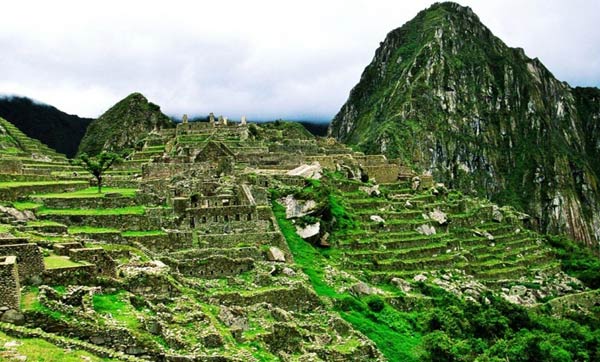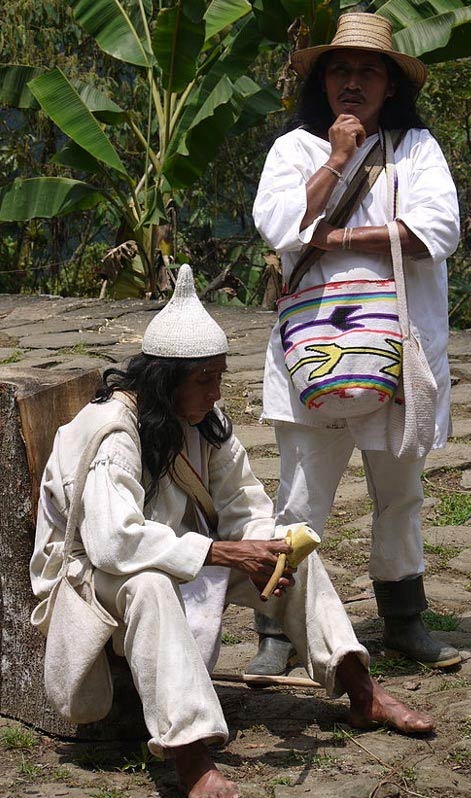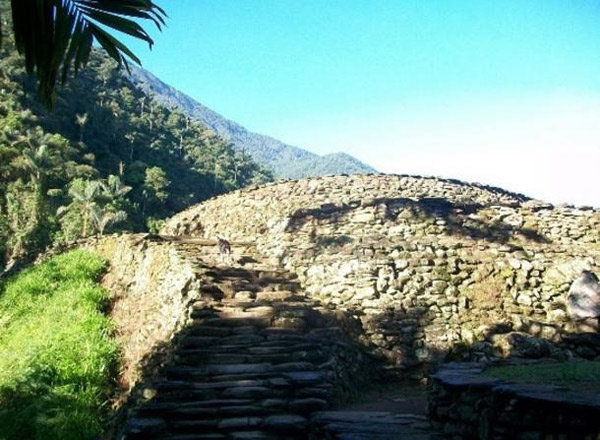The abandoned city holds the mystery of ancient civilization
In the early '70s, a local guaquero (guaquero means' robbery') was Florentino Sepúlveda and two sons Julio César and Jacobo, happened to see an old city in Colombia's Sierra Nevada mountain range, after when climbing 1,000 stone steps from a river.
Ciudad Perdida: The abandoned city holds the mystery of ancient civilization

Photos of the city disappeared in the Sierra Nevada de Santa Marta mountain range.(Photo: paradiseintheworld.com)
Another source said that the robbers found the abandoned city while hunting tropical bird feathers. This abandoned city has treasures , and Sepúlveda has not wasted time to stagger this place. News quickly spread, attracting other tomb thieves who wanted a wealthy part. As a result, deadly fights broke out among competing gangs to gain control of the site. The tomb thieves gave this place the name Infierno Verde (meaning 'Green Hell'). However, today, this place is called Ciudad Perdida (meaning 'abandoned city').

Indigenous Koguis Shaman in Ciudad Perdida.It is said that the Koguis today are the conservationists of Tayrona civilization.Shot by Uhkabu, 2014. (Source: Wikipedia Commons)
It is thought that Ciudad Perdida was built in the 9th century , and was occupied by Tayrona until the end of the 19th century. Although archaeological work was conducted in Ciudad Perdida for more than 30 years, It is estimated that only 10% of the entire site was excavated correctly. Archaeologists have discovered more than 200 buildings covering an area of about 0.3 square kilometers . These structures include many different sized houses, terraces, blue stone roads, stairs, commercial centers, reception areas and dining, canals and warehouses.
 Photos show the beauty of stone works in Ciudad Perdida, 2010. (Source: Wikipedia Commons)
Photos show the beauty of stone works in Ciudad Perdida, 2010. (Source: Wikipedia Commons)
Although grave robbers were extremely ruthless in the raid, they did not achieve the goal of taking everything from Ciudad Perdida. Therefore, later archaeological work conducted at these locations obtained various artifacts that could shed light on the Tayrona people who had settled in Ciudad Perdida . Activities include pottery, both ritual and daily use items, gold products, as well as gemstones. Some exhibits are on display at Santa Marta, a coastal city near this archaeological site, and in Museo Del Oro, in the capital Bogotá.

The Crotal Bell, made of gold and bronze alloys of Tayrona culture, 1000-1500 AD, at the Metropolitan Museum of Art, New York, 2010. Photo by Janmad.(Source: Wikipedia Commons)
In the mid-1970s, a few years after Sepúlveda discovered Ciudad Perdida, the Colombian government stepped in to solve this problem. The army and archaeologists were sent to protect this important area. However, battles still occasionally occur and grave robbers continue to plunder for years.
In addition to the group of grave robbers, the surrounding jungle has also been hampered by drug wars and paramilitary activities since the mid-1960s.
In 2003, a group of eight foreign tourists and their guides were kidnapped by ELN guerrillas while on their way to Ciudad Perdida. Fortunately, they were released three months later. After this incident, the road to Ciudad Perdida was closed to the public . Only in 2005, visitors were once again allowed to visit this ancient ruins, after the army was sent to ensure the safety of the journey.

Mysterious abandoned city in Tayrona National Park, Santa Marta, Colombia.(Source: sumak-travel.org)
This security enhancement has increased the number of tourists. For example, the number of visitors to Ciudad Perdida has increased from 2000 in 2007 to 8000 in 2011.
While tourism may be a potential substitute for drug trafficking as a source of income in the region, it poses separate problems. For example, if tourism is not controlled, it will negatively impact this relic. In addition, the tourism industry may increase looting at lesser-known relics in the region without the monitoring authority. Looted artifacts can be sold on the black market to tourists as 'souvenirs' .
- Found ancient Mayan city in Mexican forest
- The abandoned city is wider than Paris and London in the United States
- The mystery of the disappearance of ancient civilizations
- Uxmal City: Ancient Mayan civilization is still unknown
- The mystery of the first ancient civilization
- Highway legendary ancient city under 800m Antarctic ice?
- Discover beautiful 5,000-year-old underwater city in Turkey
- Discovered two ancient tombs in Maya civilization in Guatemala
- The famous mystery in history has been solved
- Egypt's earliest civilization will soon be clear thanks to this 7000-year-old city
- 'Virtual archeology' connects fragments of ancient civilization
- Civilizations of aliens?
 'Fine laughs' - Scary and painful torture in ancient times
'Fine laughs' - Scary and painful torture in ancient times The sequence of numbers 142857 of the Egyptian pyramids is known as the strangest number in the world - Why?
The sequence of numbers 142857 of the Egyptian pyramids is known as the strangest number in the world - Why? History of the iron
History of the iron What is alum?
What is alum?